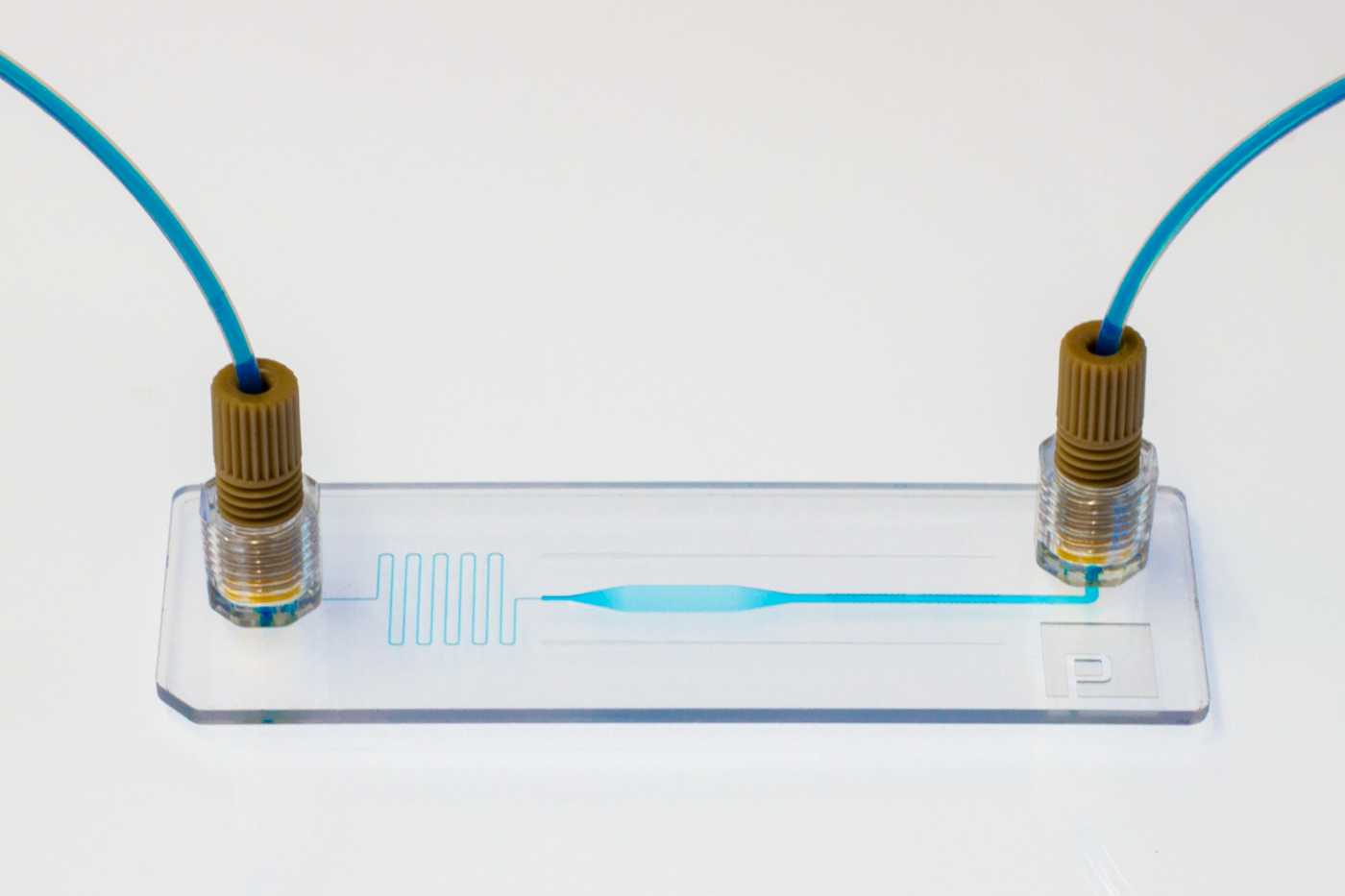Resources
We’re expanding into an upgraded facility and pausing manufacturing December 15 - January 2. Place standard lead time orders by November 28th and expedited orders by December 5th for delivery before the break. Rush options available. Contact us.
Flow Cell Designer
Instructions link to Instructions section
- Adjust the parameters in the fields above.
- Generate CAD to automatically build a 3D model of your device.
- Quote your custom design for rapid manufacturing.
FAQ link to FAQ section
Flow cells are the most basic type of microfluidic device, characterized by a single channel with uniform height and width dimensions. To facilitate imaging using standard microscopes, the channel is enclosed by a thin glass or plastic film. External pumps or instruments induce fluid flow within the device through inlet and outlet ports or reservoirs. This straightforward design proves valuable for various applications demanding precise flow control and optical readouts, including cell culture, cell counting, and fluorescence-based assays.
Not yet! The flow cell is the first standard architecture that we are offering at Parallel. However, we plan to add new options in the near future. Choose a link below to vote for the design that you would like to see next:
You can also always submit your own custom design as long as it follows our Design Guide.
No. The preview uses colors to demonstrate the part’s geometry more clearly. However, the device you receive will be optically transparent. See below for a photo of an example device.
You can also always submit your own custom design as long as it follows our Design Guide.

We offer three standard materials, Polycarbonate (PC), Polymethyl Methacrylate (PMMA), and Cyclic Olefin Polymer (COP). PMMA is a great general-purpose polymer for optical applications. PC is well-suited to high-temperature processes like PCR. COP excels in applications that require a combination of high-performance optical properties and chemical resistance. See the Design Guide for each of the three materials:
Our flow cells at Parallel are capped with a 175µm thick polymer film for a combination of mechanical strength and imaging compatibility. We attach the cap using a pure thermal diffusion bonding technique, without adhesives or solvents.